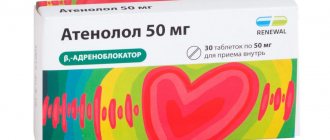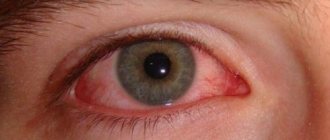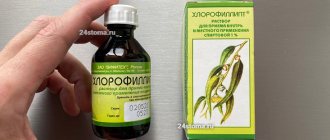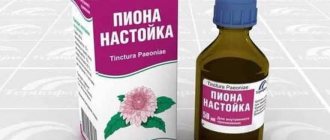Corvalol is a popular medicine, especially among older people. Available in the form of drops and tablets. In the minds of many, it is used when “the heart is in pain.” In fact, this combination drug belongs to the group of sedatives and hypnotics. It is not easy to find out the whole truth about Corvalol. Despite the fact that the drug is decades old, even doctors have ambivalent attitudes towards it.
Professor Pavel Vorobyov, head of an organization engaged in research into cost-effectiveness in pharmacology, believes that Corvalol should be classified as a hard drug and sold only by prescription. Its use prevents patients from seeing a doctor on time and hides the symptoms of serious diseases.
Also, uncontrolled use of the drug can lead to the development of side effects, addiction and poisoning.
Corvalol drops: composition
The drug contains mint oil, ethyl bromizovalerianate and phenobarbital.
Peppermint is known for its ability to have a calming effect on the nervous system. In addition, mint helps blood vessels dilate.
Phenobarbital is a special component that enhances the effect of other substances that make up Corvalol. In particular, it contributes to the rapid manifestation of a sedative effect on the central nervous system and the body as a whole. Thanks to phenobarbital, Corvalol makes it easier for a person to go to sleep, which is especially important after suffering stress.
Ethyl bromizovalerate is responsible for the antispasmodic effect accompanied by a strong sedative effect.
Drops contain alcohol as an auxiliary component.
Other Adverse Effects
Self-medication with Corvalol can mask the symptoms of more serious diseases, such as cancer. The components of the drug cannot be called beneficial to health. In addition, the drug may have a pronounced placebo effect. On the one hand, this is good and increases its effectiveness. On the other hand, patients stop taking medications that are really necessary for diseases of the cardiovascular system. Patient adherence to treatment is a big problem in cardiology.
Yes, perhaps they act more slowly and do not bring relief immediately, but it is their use that increases life expectancy and reduces the risk of heart attacks and strokes (statins, antihypertensive drugs, antiplatelet agents). Because they act on the mechanisms of disease development, and do not simply mask the symptoms.
Corvalol drops at night can become for an elderly person an imaginary concern for their health and a ritual of self-soothing. Then, if symptoms intensify or new ones appear, he does not go for examination, but simply increases the dose. This is especially true for residents of areas with low access to medical care.
How many drops of Corvalol to take?
Most often you can find Corvalol in drops. It is sold in glass vials equipped with a dropper. Therefore, the question most often arises of how many drops you need to drink in each specific case. There is an opinion that it is correct to take into account the following calculation: 1 drop per 1 year of life. However, medicine says that this is wrong.
A single dose should not exceed 30 drops. Corvalol concentrate must be dissolved in a sufficient amount of water. The more liquid you take for dilution, the less pronounced the taste of the medicinal solution will be. In special cases, the single dose can be increased to 50 drops.
You can repeat the reception up to three times a day. It is important that the daily dose does not exceed 100 drops.
It is not recommended to take Corvalol as a course without consulting a doctor. Unlike long-term use, a one-time use during stress does not pose a danger to humans, however, constant use of the drug can also have a negative effect on the body.
Reactions, consequences of poisoning
In large doses, Corvalol reduces the metabolic rate and lowers body temperature due to its effect on the central mechanisms of thermoregulation. Reduces blood pressure. As a result, in acute poisoning, a decrease in renal filtration and the development of oliguria and anuria are possible.
The drug component phenobarbital significantly inhibits psychomotor reactions and impairs coordination of movements. Some doctors see this as an additional provoking factor for falls in older people with subsequent hip fractures. Osteoporosis, many contraindications to surgery for treatment, a long recovery period and bed rest can cause congestion in the lungs, the development of pneumonia, and ultimately lead to death.
The use of phenobarbital with alcohol not only greatly slows down psychomotor reactions and leads to impaired coordination. Overdose can cause coma and death. Long-term use of the drug causes fatigue, deterioration of memory and concentration, depression, headache, and tremor.
The instructions for medical use of the drug Corvalol do not prohibit the use of the drug simultaneously with alcohol. At the same time, the Roszdravnadzor database recorded adverse reactions when taking the drug Corvalol, which in some cases led to death. These cases were associated with its uncontrolled use in combination with alcohol.
The instructions for Corvalol do not prohibit the use of the drug simultaneously with alcohol, but cases of death have been recorded when it is taken uncontrolled along with alcohol.
Overdose
Due to the fact that the drug contains bromine compounds, an overdose can provoke:
- depression;
- rhinitis;
- inflammation of the conjunctiva;
- lack of coordination;
- drug dependence.
With prolonged use, patients note the appearance of dizziness, increased drowsiness, and the appearance of allergic reactions.
With liver failure, a rash may appear, accompanied by severe itching. Each meal will make the rash worse, even if Corvalol is stopped. Patients with phenobarbital poisoning note the appearance of edema, which indicates an exacerbation of renal failure. If such a reaction occurs, the patient should urgently call a doctor and, if necessary, be hospitalized.
When to use
The drug cannot treat any serious diseases. It is usually taken for dysfunction without serious pathologies (functional impairment). Corvalol is taken to reduce the excitability of the nervous system and as a drug with some vasodilating effect. It can help with increased irritability, agitation with difficulty falling asleep and body reactions such as sweating, redness, weakness (manifestations of autonomic reactions of the nervous system). Sometimes to relieve intestinal spasms.
The main purpose of taking Corvalol is to reduce the excitability of the nervous system and slightly dilate blood vessels.
The General Secretary of the Russian Scientific Medical Society of Therapists, Andrei Spassky, believes that the drug is beneficial. It helps with heart disease, rhythm disturbances, and cardioneurosis. There are about 17 million people suffering from coronary heart disease in Russia. Approximately every second person uses such drugs, because they have a fairly good antiarrhythmic effect.
Special reactions to the components of the drug
The following negative reactions were observed in patients taking Corvalol:
- nausea;
- vomit;
- constipation;
- feeling of heaviness in the stomach;
- increased weakness;
- dizziness;
- hallucinations;
- headaches in the frontal lobe;
- anemia;
- thrombocytopenia;
- difficulty breathing.
Habituation and Dependence
Addiction to frequent uncontrolled use often causes addiction and dependence. Phenobarbital has an accumulation effect in the body. Also, over time, with long-term use, the body’s sensitivity to the previous dose decreases and the person begins to gradually increase it, since he does not receive relief as before.
A person cannot stop taking it on his own, as a strong withdrawal syndrome develops. In mild cases, withdrawal syndrome is manifested by anxiety, tremors, increasing weakness throughout the body, dizziness, nausea, vomiting, sleep disturbance, dizziness, and the development of fainting. In severe cases, convulsions and delirium are possible.
Is it possible to use Corvalol for VSD?
Vegetative-vascular dystonia is not a diagnosis, but this condition well characterizes the well-being of many people. It is accompanied by fatigue, dizziness that occurs with a sudden change in body position, including darkening of the eyes. Dystonia is a condition of blood vessels in which they do not have time to respond to a change from a horizontal to a vertical body position, and also cannot expand in a timely manner to allow more blood to pass through during sports activities.
In this case, the effect of Corvalol is explained by several factors:
- mint makes blood vessels more elastic;
- bromine reduces anxiety, which increases the symptoms of VSD;
- phenobarbital enhances the effect of the other two components, improving sleep.
Indications for use
The medication in solid form is prescribed for the following symptoms:
- increased irritability;
- vegetative-vascular dystonia;
- hypertensive diseases;
- disturbed sleep;
- spasms of the coronary vessels.
Drops are effective for conditions such as:
- central nervous system disorder;
- neurotic state;
- mildly disturbed heartbeat;
- disturbed sleep.
How to take Corvalol for herpes
The effectiveness of Corvalol against the herpes virus, which manifests itself on the lips in the form of ulcers, has been noted. It is important to use Corvalol at the first sign of a painful sore on the lips. In order to prevent the disease from developing, it is necessary to wet a piece of cotton wool or one end of a cotton swab with Corvalol and apply it to the ulcer. A tingling sensation will indicate that the drug has begun to destroy the ulcer. Alcohol, having a drying effect, will speed up recovery. You need to repeat the procedure several times a day until the tingling stops.
Placebo effect
The literature describes placebo effects for Corvalol and the similar composition Valocordin1. Thus, elderly people living abroad, former citizens of Russia (USSR), sometimes at very old age, asked to send these particular drugs, because previously they “helped great.” What “used to be” was 20 years ago, they were younger and healthier, did not interest anyone. Explanations from local doctors and relatives that there are more effective, modern medicines did not reassure them. But the most interesting thing is that the new medications themselves did not help. The “tried and true” were needed. Then they resorted to a combination of active ingredients according to the instructions from Corvalol to produce exactly the same ones. But no, only the “old” Valocordin or Corvalol were needed. When patients did get “their” drugs, they began taking them with great pleasure and hope. Usually they helped, just as “effectively” as many years ago.
For many elderly patients, it is necessary to weigh the benefits and possible harm, additional risks when taking Corvalol. Often this is psychological dependence and the effect of self-hypnosis.
Do not take medications on your own and always consult a doctor.
Contraindications
For two types of medicinal drugs:
- acute renal and liver failure;
- lactation period;
- epilepsy;
- excessive sensitivity to the drug.
Tablets are also contraindicated in the following cases:
- lactose indigestibility;
- acute form of chronic heart failure;
- lack of glucose-galactose malabsorption;
- susceptibility to bromine;
- pregnancy.
Drug danger
Many people know about the beneficial properties of the sedative, but not everyone realizes how harmful Corvalol is if the rules for its use are violated. For example, ethyl ester of α-bromoisovaleric acid is a substance that has an antispasmodic effect. Depending on the portion of drops, the drug exhibits a sedative or hypnotic effect. This dosage is determined for each patient individually.
If the rules of administration are violated, the drug causes dangerous complications.
Phenobarbital, which enters the body after consuming the usual dose of the drug (15 to 20 drops), causes a vasodilator and moderate sedative effect. The hypnotic effect does not appear after taking such a portion of drops.
Menthol oil also dilates blood vessels and relaxes smooth muscles. But when using a dose of 25 mg drops or more, intestinal motility decreases and constipation occurs.
In many European countries and the USA, the active ingredients of Corvalol are prohibited. For example, phenobarbital is dangerous for people, as it is considered a narcotic substance that provokes addiction. With systematic use of Corvalol, this component provokes a decrease in cognitive functions: speech disorders, loss of short-term memory, unsteadiness when walking. In addition, the likelihood of neurological disorders, withdrawal symptoms, and sexual disorders increases.
With prolonged use of drops, the risk of bromine accumulation in the body and the development of intoxication increases.
Degrees of poisoning:
- Mild – general weakness, desire to sleep, muscle weakness, absent-mindedness, speech impairment, apathy, purpura (accumulation of blood under the skin, mucous membranes), etc.
- Average – pathologically prolonged sleep, involuntary secretion of saliva, increased, decreased muscle strength up to paralysis, hypotension, decreased amount of urine, dilated pupils.
- Severe - coma due to barbiturate intoxication, which is accompanied by respiratory failure, decreased reflexes, and loss of consciousness. In addition, blood pressure decreases, pathological noises occur during breathing, tachycardia, the skin and mucous membranes acquire a blue tint.
Functional heart failure continues to develop, after which the lungs often swell.
The lethal dose of drops is from 0.1 to 0.3 g/kg; the patient dies after taking 100 mg/kg of phenobarbital.
In case of mild intoxication, the stomach is washed and the victim is given enterosorbent drugs. In case of severe poisoning, cardiac massage and artificial respiration cannot be avoided. It is imperative to call an ambulance.
Complications of intoxication, even with timely assistance, are quite dangerous - severe forms of dermatitis, functional failure of the heart, respiratory organs or kidneys in acute form. Therefore, the dosage of drops must be correct.
Component Properties
Corvalol eliminates spasm of smooth muscles, has a sedative effect and can help with mild sleep disorders. The therapeutic effect of the drug is determined by its components.
Ethylbromoisovalerate and alcohol affect the receptors of the inner lining of the mouth and pharynx, reduce the excitability of the central nervous system, and provoke an inhibitory effect on the cerebral cortex and subcortical nerve centers. Thanks to these substances, the drug has an antispasmodic and sedative effect similar to Valerian tincture. In large dosages, the sedative exhibits a pronounced hypnotic effect.
Phenobarbital has a sedative effect; this substance inhibits the transmission of nerve impulses to the cortex and subcortex of the brain. This component helps relieve irritation, under its influence the patient feels drowsiness, and the reaction rate decreases. The degree of suppression of excitatory impulses depends on the portion of drops: the recommended dose will have a calming effect, and in case of an overdose, a pronounced hypnotic effect will appear.
Corvalol has a sedative, antispasmodic, vasodilator effect
The components of Corvalol inhibit the activity of the vasomotor (vasomotor) center. Phenobarbital relaxes vascular smooth muscle, resulting in a moderate hypotensive effect of the drug. However, when blood pressure increases, it is recommended to take other medications; Corvalol is not suitable for this purpose. The drops slightly reduce blood pressure, but they are not able to eliminate the excessive increase in blood pressure during a hypertensive crisis.
Menthol oil is an antispasmodic, promotes vasodilation, enhances intestinal motility, eliminating excess gas formation. Thanks to peppermint oil, the drops have a pleasant refreshing taste and a disinfecting effect.
The tincture is taken before meals, first dissolved in a small dose of filtered water or by dropping the required portion onto refined sugar.
Many patients are interested in the question of how long it takes for Corvalol to work. The therapeutic effect appears 20 minutes after administration and lasts for 3–6 hours. Most of the medicine begins to be absorbed through the oral mucosa.
In patients who have previously taken medications with barbituric acid, the therapeutic effect is reduced due to the rapid metabolism of phenobarbital in the liver.
Instructions for use of Corvalol
Corvalol belongs to the group of drugs with a reflex effect due to the combination of active substances included in the composition.
The peculiarity of the drug is its combined effect on various parts of the regulation of vascular tone and brain centers. Sedative and moderate hypnotic effects improve the patient's well-being. However, there are restrictions on intake, neglect of which leads to the development of toxic effects.
Corvalol is not recommended for use by children under 12 years of age or by women during pregnancy and lactation.
Indications for use
The availability of the drug contributes to uncontrolled use of the drug, which causes undesirable consequences and signs of overdose. Main indications for use of Corvalol:
- insomnia;
- increased level of anxiety;
- neuroses with irritability;
- panic attacks;
- tachycardia (high heart rate);
- hypertension (high blood pressure) caused by physical activity or emotional stress;
- angina pectoris.
In addition, conditions that Corvalol helps with include abdominal cramps and bowel movements associated with stress.
Composition of the drug
The wide range of drug effects is determined by the selection of adequate doses of active molecules. The content of the drug in different release forms is presented in the table.
| Drops (in 1 ml, 26 drops) | Pills | |
| Bromoisovaleric acid ethyl ester (valerian) | 20 mg | 12.42 mg |
| Phenobarbital | 18.26 mg | 11.34 mg |
| Peppermint oil | 1.42 mg | 0.88 mg |
| Additional substances |
|
|
Phenobarbital belongs to the group of barbiturates (tranquilizing drugs) that have pronounced sedative, hypnotic or anti-anxiety properties. In high doses, the substance is used to relieve and prevent seizures in patients with epilepsy.
The pharmacology of phenobarbital includes enhancing (inducing) the activity of liver enzymes, where drug utilization occurs. Therefore, it is necessary to inform your doctor about regularly taking medications containing barbiturates.
Bromoisovaleric acid ester belongs to the group of sedatives of plant origin. The medicine acts primarily through receptors located in the mucous membrane of the nasopharynx and oropharynx. Inhibition of the pathological activity of the cerebral cortex and underlying structures relieves reflex vascular spasm (eliminating pain, symptoms of hypertension). The sedative effect is realized through inhibition in the central nervous system.
Peppermint oil contains menthol extract, which interacts with receptors in the mouth and stomach, resulting in a pseudo-cold effect. The distracting action “switches” vicious circles of impulses in the nervous system and causes calm, elimination of pain in the heart and abdomen.
Release form
Corvalol is a domestic product, which is available in 2 forms:
- drops for oral use: vial (bottle) of 25, 30 and 50 ml;
- tablets - blisters, 30 pieces per package.
The patient independently chooses a convenient form for use: drops are preferred at home; tablets are preferred to relieve an attack at work or on the street.
How to use?
The frequency, duration of the course and dosage of the drug depend on the goals pursued.
Recommended methods of taking Covalol are presented in the table.
| Pathology | Single dose | Multiplicity | Course duration |
| Attack of chest pain | 30-40 drops (2 tablets) | Of necessity | — |
| Insomnia | 15-30 drops (1 tablet) | Once before bedtime | 1-1.5 months |
| Unstable mental disorders | 15-30 drops (1 tablet) | 2-3 times a day | Up to 3 months |
Corvalol in tablets and drops is prescribed for sublingual use (under the tongue).
Instructions for the use of Corvalol in drops require careful use of the drug in patients with impaired renal or hepatic function: slow metabolism of the drug contributes to increased concentration and the development of toxic effects.
It is recommended to use the drops after applying sugar to the breast.
What are the symptoms of overdose?
The consequence of exceeding the frequency of administration and duration of treatment is acute or chronic poisoning (due to the accumulation of the drug in the tissues of the body).
Main signs of intoxication:
- drowsiness (to the point of coma);
- headache;
- decreased diuresis - the daily amount of urine;
- respiratory failure (frequent and superficial, in the final stage - rare);
- decreased body temperature;
- drop in blood pressure;
- tachycardia, at the final stage - bradycardia (low heart rate), development of arrhythmias.
In some cases, dependence on the drug develops, the treatment of which requires a transition to a safer substitute without an addictive effect.
There is no specific treatment for acute intoxication - it is necessary to quickly remove the drug: rinse the stomach, prescribe diuretics (diuretics). To improve your condition, you can drink strong coffee.
Compatibility of Corvalol with alcohol
It has been proven that the combination of alcoholic beverages with Corvalol in any order can cause serious complications. This is explained by the fact that alcohol increases blood pressure, and Corvalol, on the contrary, stabilizes the heart rate. The imposition of such influences entails an imbalance in the body, which is accompanied by the destruction of tissue of the heart muscle and blood vessels. In addition, if you drink a large dose of Corvalol immediately after drinking alcohol, there is a risk of heart damage and rupture of the myocardial wall.
Side effects
Undesirable consequences from the use of Corvalol occur in less than 10% of patients. Most common reactions:
nausea, abdominal discomfort, stomach and intestinal cramps;- allergic reactions in the form of rash, swelling;
- drowsiness, decreased concentration, therefore it is not recommended to use the drug for patients whose profession requires attentiveness: drivers, doctors and others;
- decrease in heart rate;
- dizziness.
These phenomena can be eliminated by taking tonics (strong tea or coffee) and reducing the dose of the drug.
Use in pediatrics
Most pediatricians do not recommend prescribing Corvalol to children under 12 years of age. Sometimes in emergency situations it is allowed to take the drug once a day, the dose is determined by the doctor. For the treatment of nervous disorders, sleep disorders and other conditions requiring the use of sedatives and sedatives, a special form of medication was developed - Corvalol Kids. This medication, which includes herbal ingredients, does not contain chemical or toxic additives.
Important! Corvalol Kids has passed all the necessary quality tests, does not cause side effects, and can be prescribed to children of all ages.
Is there a lethal dose?
The active substances of Corvalol are of plant origin, therefore they are safe, however, the use of high doses of the drug is accompanied by the risk of complications.
It is believed that the lethal dose of the drug is 120-150 drops in one dose (240 tablets, respectively). The maximum permissible concentration of the drug differs in each individual case, depending on age, the state of the enzyme systems of the liver and kidneys (for alcoholics, the toxic dose is higher, up to 200 drops).
Death occurs due to cardiac and respiratory arrest. Intensive therapy requires the administration of detoxification drugs and cardiotonic agents.
Drug during pregnancy
The instructions indicate that Corvalol tablets and drops are contraindicated for use while pregnant.
The use of the drug in the 1st trimester of pregnancy can negatively affect the development of the fetus, and in the 3rd semester it can provoke a disorder of the respiratory system of the newborn.
If there is an urgent need to take the drug during pregnancy, Corvalol can be used in minimal quantities. However, if possible, it is advisable to stop taking the drug.







